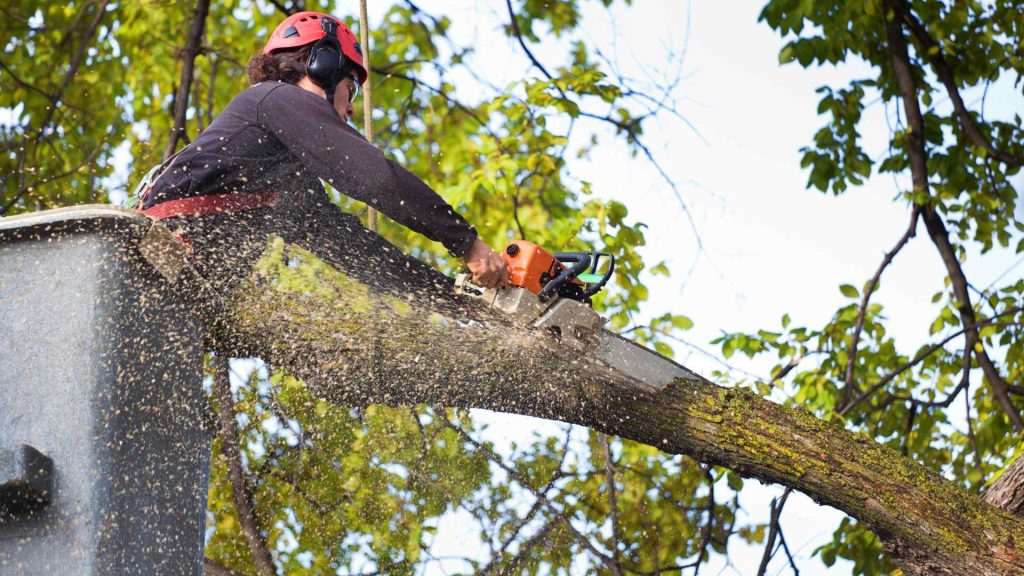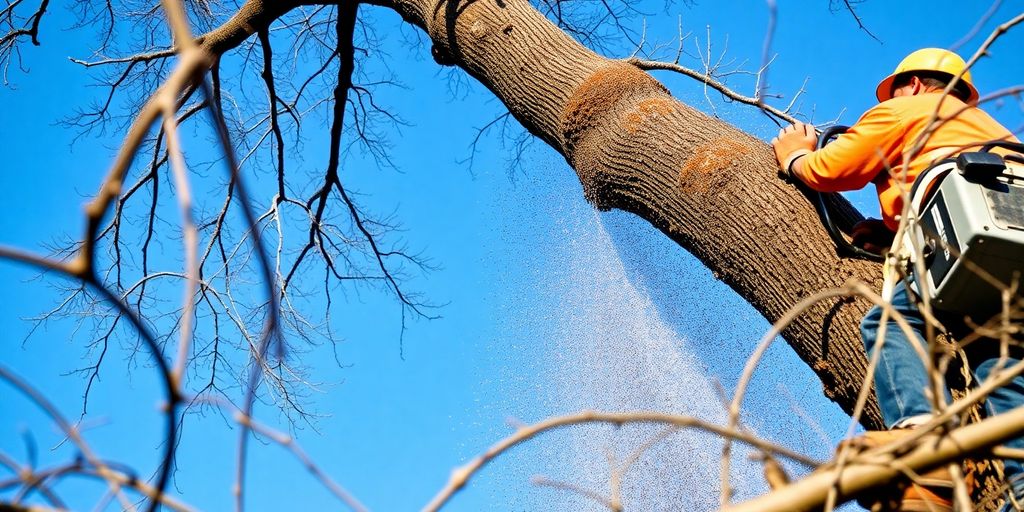Tree Stump Removal Cost Breakdown – CAM Tree Services Middletown,...
Read More
Tree Removal: When Is It Necessary?
When it comes to maintaining a healthy garden or landscape, we often find ourselves in a balancing act akin to the story of the sword of Damocles. Trees, majestic and vital as they are, can sometimes pose risks that necessitate tough decisions. The decision to remove a tree is not one to be taken lightly; it requires careful consideration of various factors to ensure the safety of both property and individuals.
Signs of Tree Decay
When trees exhibit signs of decay, such as hollow trunks or extensive dead branches, it’s crucial to assess their health and safety promptly. Identifying these indicators early on can prevent potential hazards like falling limbs or the tree itself.
Hollow trunks, often caused by decay or disease, weaken the tree’s structural integrity, making it susceptible to toppling over during storms or high winds. These hollow areas can compromise the tree’s ability to support its own weight, posing a significant risk to nearby structures or individuals.
Additionally, extensive dead branches indicate a lack of vitality in the tree, making them prone to breaking off unexpectedly. These branches can fall at any moment, endangering anyone below. Proper evaluation and timely action are essential when dealing with trees showing signs of decay to avoid accidents and ensure the safety of the surrounding environment.
Regular inspections by certified arborists can help in detecting these warning signs early, allowing for necessary measures to be taken promptly.
Risk of Falling Branches
After identifying signs of decay in a tree, our focus shifts to assessing the risk of falling branches to mitigate potential hazards. Falling branches pose a significant danger to property, passersby, and structures, making it crucial to evaluate the likelihood of such occurrences. Factors like the tree’s overall health, recent weather conditions, and the presence of dead or weakened limbs can all contribute to an increased risk of branches breaking off.
Regular inspections by trained professionals are essential in identifying potential risks associated with falling branches. These experts can determine if a tree has structural weaknesses that may lead to branch failures. Additionally, they can assess the tree’s proximity to buildings, power lines, or high-traffic areas to gauge the potential impact of falling branches.
Structural Instability of Tree
Assessing the structural stability of a tree requires a comprehensive examination of its trunk, branches, and root system to determine any potential weaknesses or hazards. Structural instability can arise from various factors such as disease, pest infestations, or adverse weather conditions. Signs of structural instability include cracks or splits in the trunk, decayed or hollow areas, and leaning or unbalanced growth patterns. These issues can compromise the tree’s ability to support its own weight and withstand external forces like wind or storms.
If a tree displays significant structural instability, it poses a serious risk of falling, potentially causing property damage or personal injury. In such cases, it’s essential to prioritize safety and consider tree removal as a necessary precaution. Professional arborists can assess the extent of the instability and recommend appropriate measures, which may include pruning, cabling, or ultimately, tree removal. By addressing structural instability promptly, we can mitigate the potential risks associated with unstable trees and ensure the safety of our surroundings.
Encroaching on Property
Sometimes, trees can encroach on property boundaries, leading to potential conflicts and concerns for homeowners. When the branches of a tree extend over a property line, they can create issues such as blocked sunlight, falling debris, or even structural damage. In some cases, roots may also spread underground, causing damage to foundations, driveways, or underground utilities.
Dealing with trees encroaching on property requires careful consideration. Homeowners should first try to communicate with neighbors to address the situation amicably. If discussions fail to resolve the issue, local ordinances and property laws may offer guidance on the rights and responsibilities of each party. In situations where the encroachment poses a risk to property or safety, professional arborists or tree removal services may need to be consulted.
Regular tree maintenance and pruning can help prevent encroachment issues before they arise. By staying vigilant and addressing potential problems early on, homeowners can maintain a harmonious relationship with their neighbors and protect their properties from the risks associated with encroaching trees.
Disease and Pest Infestation
When trees on a property are affected by disease and pest infestation, prompt action is essential to safeguard both the health of the tree and the surrounding environment. As tree care enthusiasts, we understand the critical role trees play in maintaining ecological balance. Diseases like Dutch elm disease and pests such as emerald ash borers can wreak havoc on trees, leading to their decline and potential demise. These issues not only compromise the aesthetic appeal of the landscape but also pose risks to other plants and wildlife in the vicinity.
Early detection and intervention are key in managing disease and pest infestations. Consulting with arborists or tree care professionals can help identify the problem and determine the best course of action. In some cases, removal may be the most effective way to prevent the spread of diseases or pests to other trees. By addressing these issues promptly, we can mitigate the impact on the ecosystem and preserve the health of our green spaces for future generations.
Overall, it’s important to be aware of the signs that indicate when tree removal may be necessary.
Whether it be decay, risk of falling branches, structural instability, encroaching on property, or disease and pest infestation, these factors can pose a danger to both people and property.
By being proactive and addressing these issues promptly, you can ensure the safety and well-being of your surroundings.
Why Hiring a Certified Arborist is Crucial for Tree Health and Safety | CAM Tree Services
Professional Arborists: Tree Care Services CAM Tree Services Expert Tree...
Read MoreExpert Tree Cutting Services for Safe and Efficient Tree Removal
Essential Tree Cutting Services: Safety, Efficiency, and Expertise Many homeowners...
Read MoreGet Your Tree Service Free Estimate Today and Save on Quality Care!
Call Now For Your Tree Service Free Estimate! You can...
Read MoreEnhance Your Property’s Appeal with Expert Commercial Tree Service
Enhance Your Property’s Appeal with Expert Commercial Tree Service Lorem...
Read More



